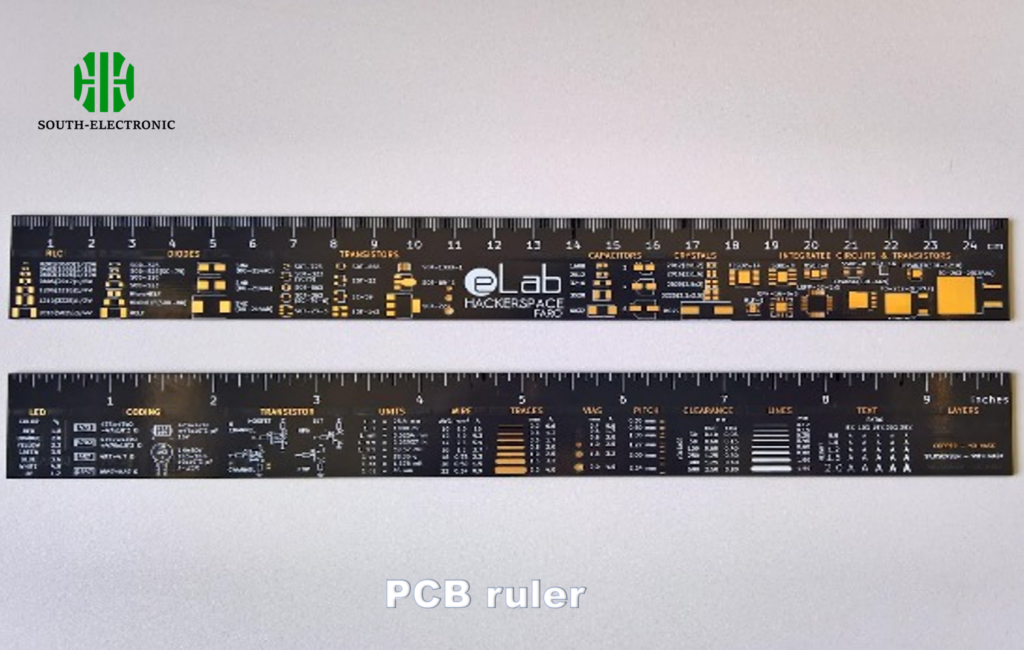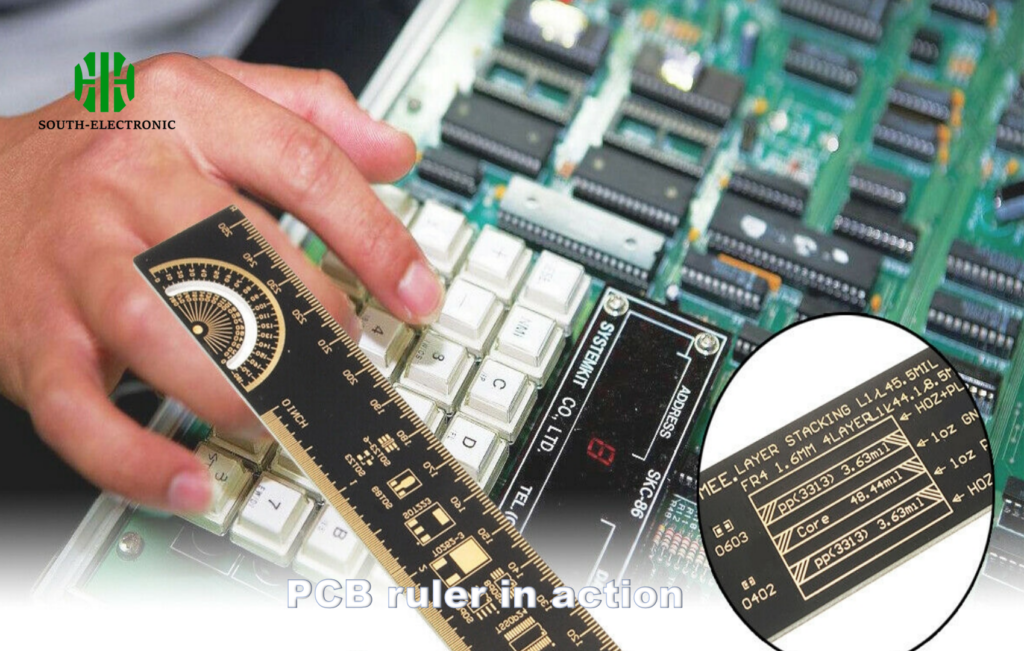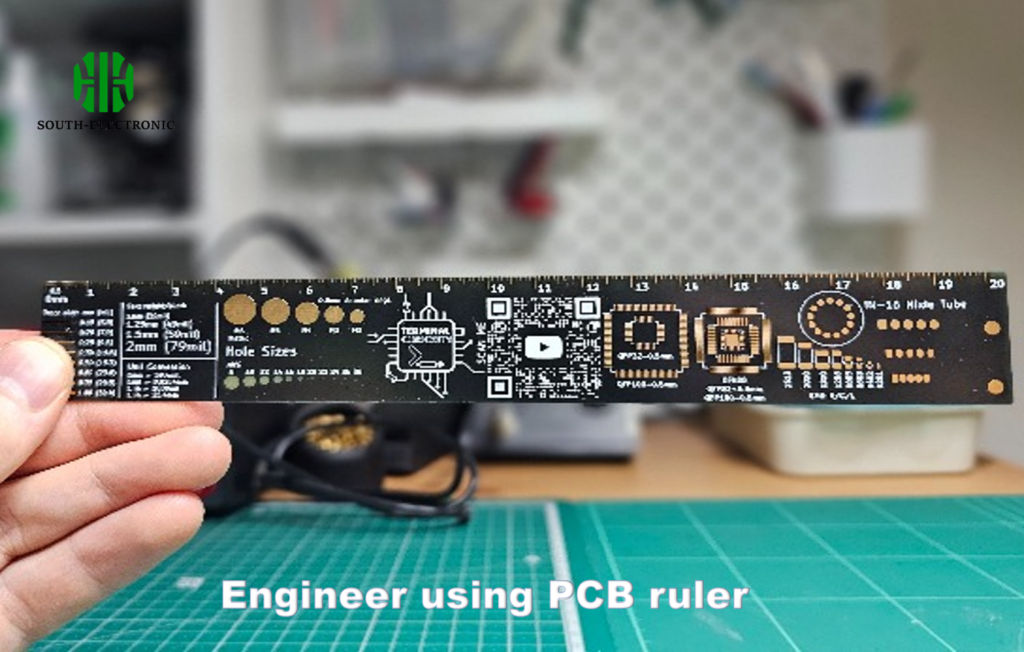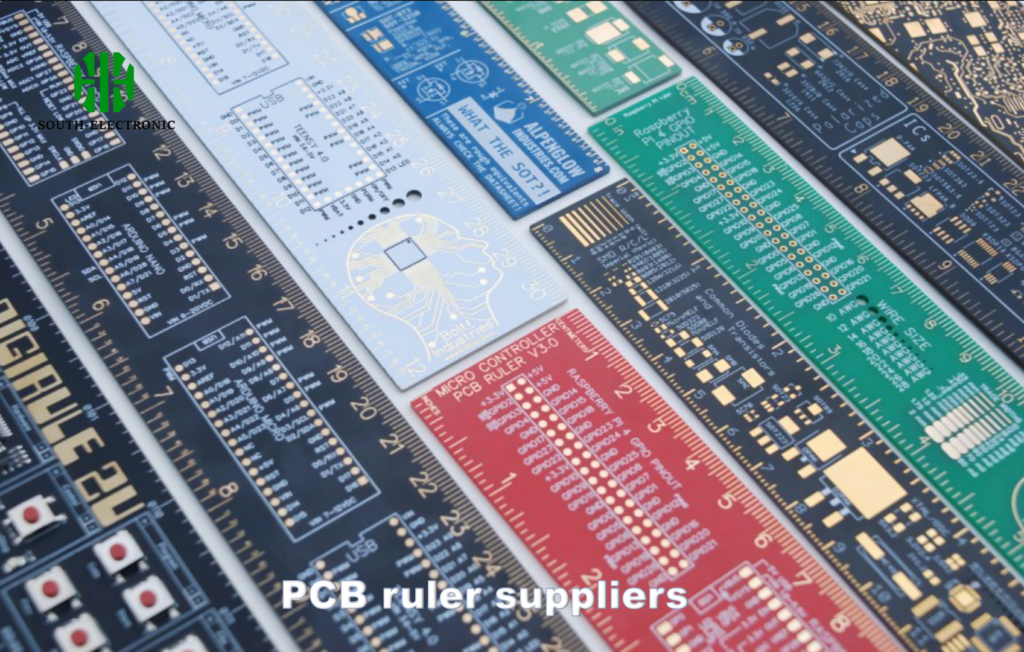Ever struggled to measure tiny components while building circuits? Regular rulers lack precision for electronics work. A PCB ruler solves this frustration by combining exact measurements with critical reference data in one compact tool.
A PCB ruler[^1] measures circuit components[^2], verifies board layouts, and provides quick access to pin spacing charts and hole sizes. Unlike ordinary rulers, its FR4 fiberglass[^3] material prevents static damage while helping engineers prototype and repair PCBs efficiently.
Most engineers use it daily without realizing its full potential. Let’s explore why this tool belongs in every electronics workspace.
What Makes a PCB Ruler Different from a Regular Ruler?
Your school ruler can’t handle surface-mount resistors or IC pin spacing. PCB rulers fill this gap with features tailored for electronics professionals.
PCB rulers use anti-static FR4 material, include 0.1" spaced grids for ICs, and print component footprints. Regular rulers lack alignment guides for breadboards or imperial/metric conversion charts for international projects.
)
Key Differences Explained
Three factors set PCB rulers apart:
1. Material Matters
FR4 fiberglass prevents accidental static discharge – a risk with metal or plastic rulers near sensitive components.
2. Measurement Features
| Feature | Regular Ruler | PCB Ruler |
|---|---|---|
| Smallest Marking | 1mm | 0.5mm |
| Grid Spacing | None | 0.1"/2.54mm IC standard |
| Edge Guides | Straight line | Breadboard pin notches |
3. Scope of Application
Plastic rulers work for paper sketches. PCB rulers align SMD parts, verify drill sizes, and even check resistor color codes via printed charts.
What Are the Top 10 Practical Uses of a PCB Ruler?
Tired of switching between calipers and datasheets? Here’s how one tool streamlines ten tasks.
PCB rulers measure component leads[^4], align connectors, check hole sizes via drilled samples, decode resistor bands, identify IC packages, space parallel traces, estimate current via trace width charts[^5], mark drilling points, test board thickness, and serve as straight edges for cutting.
)
Essential Applications
Rapid Prototyping
- Verify 2.54mm header spacing before soldering
- Match drilled holes to component pins using the size key
Board Maintenance
| Task | Ruler Feature Used |
|---|---|
| Trace Repair | Copper width vs amp table |
| Capacitor Swap | Lead spacing checker |
Design Reference
Print codes on the edge decode resistor values faster than apps – no screen glare during rework.
How Can Engineers and Hobbyists Benefit from a PCB Ruler?
Time lost searching for specs adds up. PCB rulers cut project delays through instant access to key data.
Engineers reduce assembly errors using pin spacing guides, while hobbyists learn electronics standards through the ruler’s reference charts. Both save money by preventing misaligned parts that damage boards.
)
User Advantages
Efficiency Boost
- Junior designers quickly adopt industry standards
- Repair techs identify faulty traces using ampacity tables
Cost & Error Control
| User Type | Benefit |
|---|---|
| Professionals | Faster rework of 0402 components |
| DIY Makers | Correct resistor replacements |
Portability
Fits in tool pouches – always available unlike software tools needing devices.
Where Can You Get a Free or Customizable PCB Ruler?
Quality varies wildly among Chinese suppliers. Three channels balance cost and reliability.
Free PCB rulers come with orders from JLCPCB/PCBWay. Custom designs cost $0.5-$2.5/unit via Alibaba sellers. Taobao offers logo-branded models for team giveaways.
)
China-Specific Options
Local Suppliers
| Supplier | Minimum Order | Custom Features |
|---|---|---|
| south-Electronic | 100pcs | e-mail contact |
| PCBWAY | 50pcs | Choose reference charts |
Online Markets
- AliExpress: Mixed quality, 7-day delivery
- Made-in-China.com: Bulk orders only
Pro Tips
Request FR4 material certification to avoid cheap fiberglass substitutes that wear quickly.
How to Pair a PCB Ruler with Other Tools for Better Projects?
Alone, it’s helpful. Combined with these tools, it becomes indispensable.
Use PCB rulers with digital calipers[^6] (±0.01mm) for critical measurements, magnifiers for small components, and solder stencils for perfect paste application. Add breadboard testers for quick continuity checks.
)
Synergistic Setups
PCB Design Phase
- Draw board outline with ruler
- Confirm component sizes using calipers
- Cross-check with ruler’s footprint library
Soldering & Testing
| Tool | Combined Use Case |
|---|---|
| Multimeter | Measure resistor while decoding bands |
| Tweezers | Place parts aligned to ruler marks |
Prototyping Hacks
Press the ruler against breadboards to straighten bent pins before insertion.
Conclusion
A PCB ruler bridges measurement and electronics knowledge, preventing errors while speeding up circuit work. From pro workshops to dorm rooms, it’s the multitool every builder needs.
[^1]: Discover the essential features and benefits of a PCB ruler for precise electronic measurements and designs.
[^2]: Explore techniques and tools for accurately measuring circuit components to improve your electronics projects.
[^3]: Learn about the advantages of FR4 fiberglass in preventing static damage and enhancing PCB durability.
[^4]: Learn the best practices for measuring component leads to ensure proper alignment and functionality in your PCB designs.
[^5]: Discover the importance of trace width charts in estimating current capacity and ensuring safe PCB designs.
[^6]: Learn how digital calipers can improve measurement accuracy when used with PCB rulers, essential for precise electronics work.



